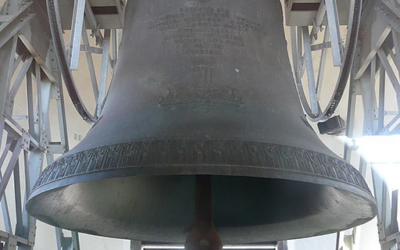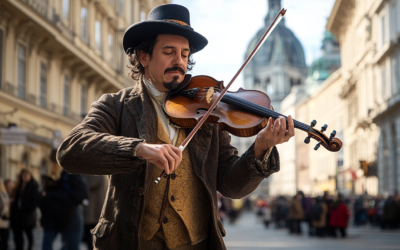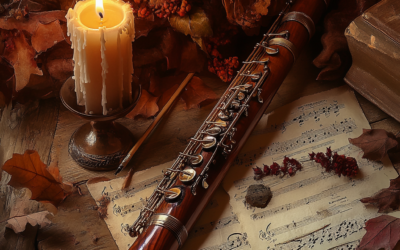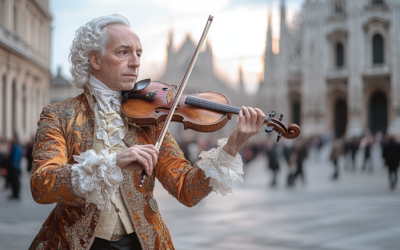Nissen's Missing Notebooks Resurface
Unveiling Hidden Plots
Article written by H. S. Brockmeyer
This second part delves deeper into Georg Nissen’s scheme to expose the truth about Mozart’s death, and the roles of Constanze Mozart and her sons in keeping it buried. As new details emerge, the mystery surrounding the famous composer’s final days grows even darker, with powerful forces potentially at play.
“Karl Mozart must have questioned himself: would it really be honouring his father, to expose such a starkly terrible crime?”
Echoes of a Distant Crime: Resolving the Mozart Cold Case File
After the death of the legendary composer Wolfgang Amadeus Mozart, his widow, Constanze, remarried in 1809 to Georg Nikolaus von Nissen, a Danish diplomat and passionate admirer of Mozart’s work. This union not only provided stability for Constanze and her children but also set in motion one of the most remarkable efforts to preserve Mozart’s legacy.
The story of Wolfgang Amadeus Mozart’s death has always been shrouded in mystery, with many accounts offering conflicting versions of events. In this second part of her investigative article Georg Nissen and the Missing Notebooks, H. S. Brockmeyer takes us further into the enigma, revealing even more about the clandestine efforts to conceal the truth behind Mozart’s demise.
Part I of Brockmeyer’s article exposed Georg Nissen’s plan to publicly disclose that Mozart had been murdered—a revelation that, if made, would have shaken European society to its core. Nissen, Mozart’s second biographer and the husband of Constanze Mozart, had gathered key witnesses, including the King of Denmark, and was ready to make a formal announcement. But his plans were thwarted, and the blame seems to rest squarely on Constanze herself, who, as Brockmeyer suggests, may have intercepted critical correspondence and blocked the exposure of the truth.
Now, in Part II, Brockmeyer uncovers even more stunning details. As Nissen lay on his deathbed in March 1826, awaiting an urgent letter from his stepson, Wolfgang Xaver Mozart, his final wish remained unfulfilled. With his death, the opportunity to reveal the conspiracy died too. Yet, according to the article, Constanze continued her efforts to keep the truth buried, going as far as manipulating her son to suppress his stepfather’s requests.
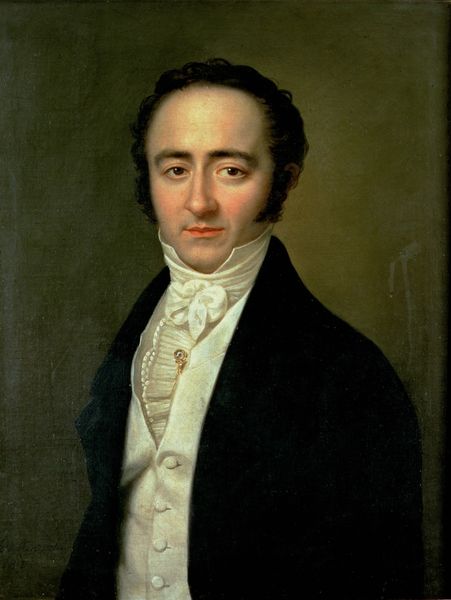
Portrait of Franz Xavier Wolfgang Mozart (1791-1844)
Now, in Part II, Brockmeyer uncovers even more stunning details. As Nissen lay on his deathbed in March 1826, awaiting an urgent letter from his stepson, Wolfgang Xaver Mozart, his final wish remained unfulfilled. With his death, the opportunity to reveal the conspiracy died too. Yet, according to the article, Constanze continued her efforts to keep the truth buried, going as far as manipulating her son to suppress his stepfather’s requests.
The article also takes a closer look at Sophie Haibl’s (Constanze’s sister) inconsistent accounts of the night Mozart died. While Sophie’s recollections to the Novello family in 1829 present a peaceful scene of Mozart’s final moments, her earlier letters to Nissen describe a much darker, more chaotic event. Brockmeyer raises questions about why Sophie felt the need to clarify who was in the room at the time of Mozart’s death. What was Sophie hiding, and how much did Constanze influence her version of the story?
The article goes further by exploring the mysterious Quartbücheln—two composition notebooks that Nissen mentioned in his will, which were passed on to Karl Mozart after his brother Wolfgang’s death in 1844. These notebooks, according to Brockmeyer, may contain the “essential excerpt” that Nissen planned to use to expose Mozart’s murder. However, Karl, who spent years in quiet contemplation, never acted on his stepfather’s wishes. Instead, he entrusted these crucial items to Alois Taux, director of the Mozarteum in Salzburg, along with Mozart’s beloved fortepiano.
Did Taux destroy the notebooks to prevent the world from learning the shocking truth, or did he hide them within the archives of the Mozarteum, waiting for the day they might be discovered? Brockmeyer paints a vivid picture of how these precious documents may still be lying in wait, concealed for generations in the hopes that, one day, they will resurface and bring justice to a long-buried crime.
Through Brockmeyer’s meticulous research and analysis, the article provides a compelling argument that a powerful group, possibly linked to the Freemasons, was behind Mozart’s murder. The cover-up, as described, could have involved threats against Constanze and Sophie, who remained silent for the rest of their lives, unable to reveal the truth for fear of retaliation.
As Brockmeyer concludes, we can only hope that the missing notebooks will one day be found, unlocking the mysteries of Mozart’s tragic end. Until then, we are left with the haunting possibility that the greatest conspiracy in music history remains hidden, waiting for its moment to be revealed.
To delve deeper into this fascinating story about Georg Nikolaus von Nissen and his connection to Mozart, you can download the full document from the link below.
Download the full document (pdf)
You May Also Like
The Echo of the Pummerin Bell
The powerful resonance of the Pummerin bell in Vienna may have influenced Mozart’s compositions, particularly Sarastro’s arias in The Magic Flute.
The Hidden Influence of Joseph Boulogne, Chevalier de Saint-George
Joseph Boulogne, known as the “Black Mozart”, was shaping the future of music while Mozart was still struggling for recognition in Paris. But history has buried the significant influence Saint-George had on Mozart’s career, erasing his pioneering style from the narrative.
The Forgotten Viennese Quartets
Attributing Offertorium K.34 to Mozart is not just misleading, it reflects the careless methods used by 19th-century scholars to inflate his legacy. Without an autograph or solid evidence, this work should not be considered part of his output.”
Mozart’s Bassoon Concerto: A Question of Authorship
The Bassoon Concerto K.191 raises more questions than it answers. Long thought to have been composed for a Munich bassoonist, new evidence suggests Mozart had no clear performer in mind. The concerto’s disjointed movements and other dubious compositions attributed to Mozart add further complexity to his legacy
The Uncertain Origins of Mozart’s Early String Quartets
Mozart’s so-called “Milanese Quartets” (K.155, 158, and 159) have long been subject to debate, primarily due to their ambiguous instrumentation and structural weaknesses. Were these works part of a larger series of orchestral divertimenti, hastily repurposed as string quartets? The answer remains elusive, reflecting the young composer’s struggles to find his own voice.
Simplicity, Errors, and the Myth of Perfection
Mozart’s canons are not as complex as often claimed, with notable errors in K.553 and K.554, and the myth of “V’amo di cuore teneramente” K.348 being debunked.


